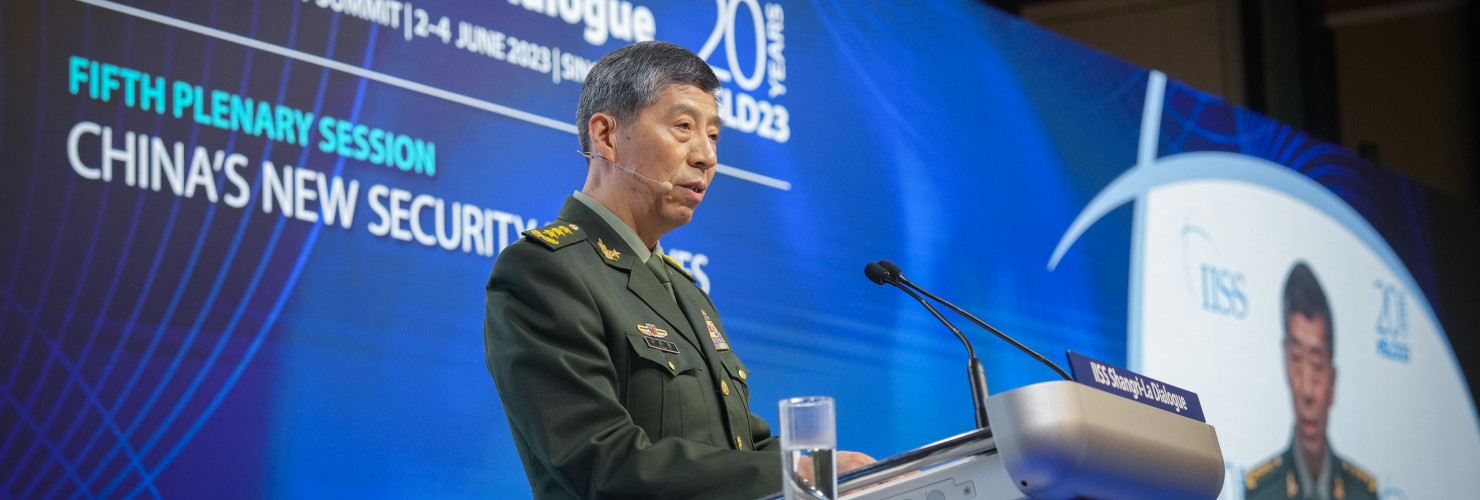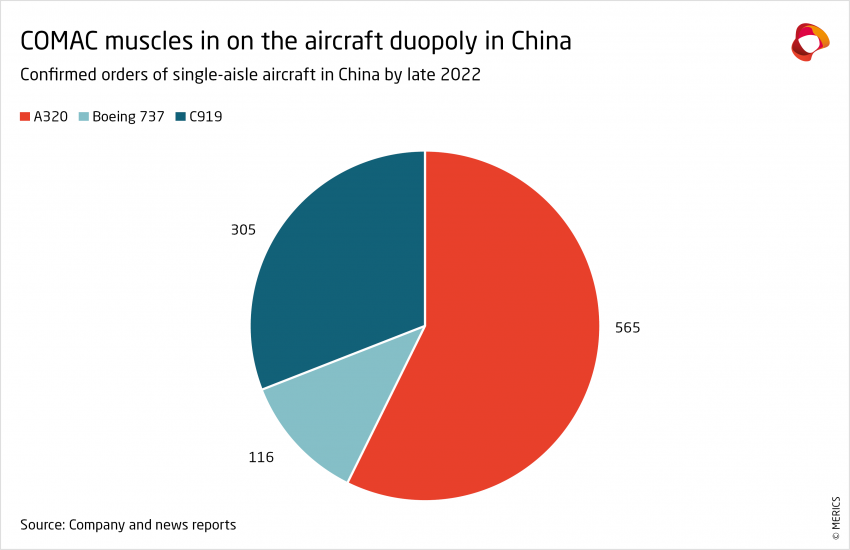

Shangri-La-Summit + Trade and Technology Council + Extreme weather conditions
Top Story
Shangri-La Dialogue gives no sign of US-China security thaw
Speaking at Asia’s main annual defense summit, the Shangri-La Dialogue in Singapore, China’s new defense minister Li Shangfu dashed any hopes of a US-China thaw in the security sphere. Taking a hostile tone, his speech mainly focused on criticizing the US and its presence in the region – without ever mentioning the US by name. Defense ministers and policymakers from across the Indo-Pacific and Europe, including US Secretary of Defense Lloyd Austin, shared the stage with Li, who made his first international public appearance at the conference held on June 2-4.
Washington has recently angled for a partial reset in relations with Beijing, seeking meetings with Chinese officials across policy fields. CIA Director Bill Burns was the highest-ranking US official to visit China since 2021, according to reports, with a secret trip to China last month to meet with counterparts. At the conference, Lloyd Austin gave a relatively toned-down speech. While criticizing China’s aggressive behavior in the region, he emphasized the need for guardrails against conflict and better crisis management mechanisms and communication channels between the countries’ two militaries. Calling out China for suspending military dialogues since August 2022, he spoke of dialogue as a necessity, not a reward.
Most regional countries at the event echoed this message, despite their broad span of priorities – whether the Philippines’ South China Sea dispute or Fiji’s concerns over climate change. All speeches by Indo-Pacific defense ministers expressed concern that a lack of communication and political will could escalate US-China competition, with disastrous consequences for the region and the world. These fears were reinforced by reports of a near-collision between a US and Chinese vessel in the Taiwan Strait after an aggressive maneuver by a Chinese navy ship.
Calls for reopening communication channels between the Chinese and American militaries have fallen on deaf ears in Beijing, however. Li Shangfu declined to meet with Austin on the sidelines of the event, a signal of a stalemate until the US lifts sanctions on China’s defense minister. When asked about restarting communication between the two sides, Li said mutual respect is the prerequisite for dialogue – echoing Beijing’s message that Washington must first change its ways if it wants to stabilize relations with China.
MERICS Analysis: “Li Shangfu’s speech at the Shangri-La Dialogue was further evidence that China’s post-party congress charm offensive does not extend to the United States,” says Helena Legarda, Lead Analyst at MERICS. “Beijing remains focused on its competition with Washington and seems willing to hold military dialogue and communication hostage as a point of leverage.”
Media coverage and sources:
METRIX
70
On June 15, China’s state and party leader Xi Jinping will turn 70. Since 2013, he holds the highest positions in the People’s Republic and has put ideology and security over the economic pragmatism of the reform and opening period as well as an assertive international stance over the more cautious approach of the Deng Xiaoping era. Under his leadership the Chinese state and the Communist Party have become as centralized and homogeneous as last seen under Mao Zedong. In contrast to Mao, however, Xi is focused on stability. “In all likelihood, the system will not implode when Xi leaves his post like it did under Mao but will endure in the institutions that have been set up,” says MERICS expert Nis Grünberg. “That makes him more powerful than Mao.”
Topics
EU and US disagree about how to challenge China’s tech ambitions
The facts: The EU–US Trade and Technology Council (TTC) again failed to agree on concrete measures to push back against China’s ambitions to become a technology superpower. The communiqué of the May 31 meeting in Stockholm explicitly named China in two areas at best peripheral to tech, criticizing its market-distorting practices in the medical devices sector and amplification of Russian disinformation about Ukraine. In several important areas, the EU and US only alluded to China – a sign of disagreement about directly calling out Beijing about market-distorting policies regarding so-called legacy chips, for example, or its attempts at economic coercion of other countries. Media reports suggest that the US had pushed for China to be named in all of these areas.
What to watch: The TTC’s failure to publicly challenge China’s actions in key areas suggests the EU and US will continue to debate what concerted moves to slow or stop Beijing’s tech ambitions could entail. The EU’s recent pledge to “de-risk” its relations with China had suggested its stance was moving into alignment with that of the US. Both sides are putting regulations in place to deal with Beijing’s tech ambitions, but where the US is happy to explicitly name China in its proposed TikTok ban, for example, EU regulations like the Anti-Coercion and Anti Foreign Subsidy Instruments are country-agnostic. This divide is reflected in Washington’s export controls and sanctions, which the EU only accepted given their extraterritorial reach and US pressure. With the EU split internally about how to deal with China, a common EU-US line is hard to imagine.
MERICS analysis: “The TTC is making little substantive progress and not becoming the strategic forum many in the EU and US had envisaged,” says Antonia Hmaidi, MERICS Analyst. “Instead of tackling the big issues, the TTC seems best-suited to harmonizing practices in very technical areas. While there is consensus about the broad challenge China poses, there is little transatlantic agreement about what to do.”
Media coverage and sources:
- European Commission: Joint Statement EU-US TTC in Sweden
- Reuters: US, EU agree firm stance on China at trade, tech meeting
- Politico: Specter of China looms over EU-US summit
China prioritizes food and energy security as extreme weather season begins
The facts: As China braces for another annual season of extreme weather, authorities are anxiously preparing the country’s water, food, and energy systems for growing risks brought about by climate change. Extreme weather events began early this year – in Henan province, for example, emergency help was dispatched to help save the province’s wheat harvest, a quarter of national output, from torrential rain. Record temperatures for May were recorded in Shanghai, Yunnan and Jiangxi, in the last of which the mercury climbed to 44 C. Heat and drought are a particularly unsettling mix in water-poor China, not least because hydropower generates 17 percent of electricity. Authorities are trying to ward off power rationing as low water levels in dams make it increasingly difficult to match the electricity demand of air conditioning. Last year, a similar situation led to power rationing that hit manufacturing in Sichuan province, in particular.
What to watch: Xi Jinping has declared food security a top priority as the growing risk of extreme weather becomes a real concern for Beijing. Self-reliance in staple foods has become a mantra, and climate adaptation is a key theme in agriculture. The low water levels of China’s main rivers are threatening to destabilize the power supply as hydropower falters and thermal plants that rely on water for cooling have to cut production. Water is in increasingly short supply in China’s northern regions and more mega-projects to divert water from the south are being drawn up. China’s overall water resources are modest, and desertification in the northern half of the country is a threat to Beijing’s national security goals of ensuring sufficient food, energy, and water supplies.
MERICS analysis: “The adverse effects of climate change are quickly pushing climate adaptation up Beijing’s agenda,” says Nis Grünberg, Lead Analyst at MERICS. “Food security is a particular challenge and Xi has recently made use of a number of public engagements to underscore the importance of modernizing agriculture. Climate adaptation, including decarbonization, will only become more and more important.”
Media coverage and sources:
Beijing’s new passenger jet a big win for industrial ambitions – even with foreign tech
The facts: China’s state-owned aerospace manufacturer Commercial Aviation Corporation of China (COMAC) has moved closer to head-to-head competition with industry giants like Airbus and Boeing. Its first homegrown large passenger jet, the C919, completed its maiden commercial flight on May 28. COMAC employed both indigenous technologies and components from foreign suppliers and Sino-foreign joint ventures. It spent over 16 years integrating those technologies into a passenger jet that can meet the standards of the Civil Aviation Administration of China.
What to watch: COMAC has weathered accusations of technology theft, extensive state-aid, guaranteed demand from state-run domestic airline customers, and a reliance on foreign inputs in its development of the jet. While there is some truth in the criticism, it downplays the considerable difficulty of building and integrating an entire ecosystem necessary to threaten the Airbus/Boeing duopoly. After all, just a few months ago Japanese manufacturing giant Mitsubishi abandoned its 15-year effort to create a regional jet.
MERICS analysis: “The C919’s success is a big win for PRC-style party-state-capitalism. It successfully brings together the innovative and productive capacity of a vibrant market with the less savory side of Beijing’s model – the subsidies and waste, protectionist procurement systems, tech transfer and outright theft,” said Jacob Gunter, Senior Analyst at MERICS. “The C919 will rely on domestic demand for now, but Airbus and Boeing should remember that China’s high-speed rail industry took a similar path, going from ‘good-enough’ to ‘globally competitive.’”
More on the topic: Beijing takes aim at Airbus and Boeing’s dominance, Comment by Max J. Zenglein and Gregor Sebastian
Media coverage and sources:
- NYT: China Crosses a Flying Milestone but Remains in the Boeing-Airbus Grip
- SCMP: China’s C919 debut could inspire aviation supply chain to take off, but self-sufficiency ‘difficult’
- Twitter: Christian Petersen-Clausen’s (a China-based documentary filmmaker) photo-laced thread from one of the first C919 flights
Merics China Digest
US Secretary of State Blinken set to travel to Beijing for talks in coming weeks (Bloomberg)
Secretary of State Antony Blinken seems set to visit China in the coming weeks for talks with top officials as the US looks to resume high-level communication despite continued tensions. Blinken had planned to visit Beijing in February but dismissed the trip after the US identified what it said was a Chinese spy balloon crossing over the continental US. (6/6/23)
Keeping America close, Russia down, and China far away: How Europeans navigate a competitive world (ECFR)
A survey by the European Council on Foreign Relations in 11 EU countries shows that European citizens aspire to remain neutral in a US-China conflict and are reluctant to de-risk from China – even if they recognize some risks in China’s economic presence in Europe. Europeans’ perception of China has changed surprisingly little when compared with the results of the poll conducted in 2021, but if China decided to deliver weapons to Russia, that would be a red line for much of the European public. (7/6/23)e
UN Human Rights Office voices alarm over detentions at Tiananmen anniversary in Hong Kong (BBC)
The United Nations Human Rights Office voiced its alarm over detentions and the obstruction of exercising freedom of expression and peaceful assembly in Hong Kong on the 34th anniversary of the Tiananmen crackdown on June 4, 1989. In previous years, commemoration of the event was held in large gatherings throughout the city. (5/6/23)
Thousands of ethnic minority Muslims defy Chinese authorities in defense of mosque (CNN)
Thousands of ethnic minority Muslims surrounded a mosque in southwestern China over the weekend in an effort to prevent what they said was an attempt by authorities to remove its dome and minarets. The apparent alteration of a mosque belonging to the Hui ethnic group in Yunnan province comes amid a sweeping campaign unleashed by Xi Jinping to “sinicize” religion. (2/6/23)
